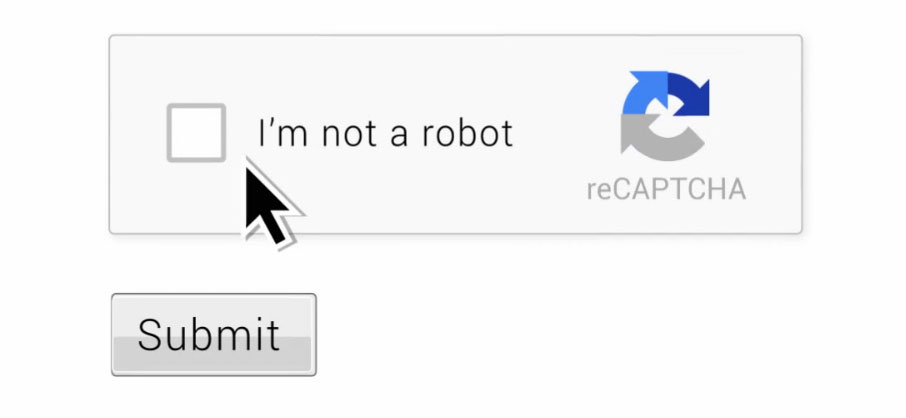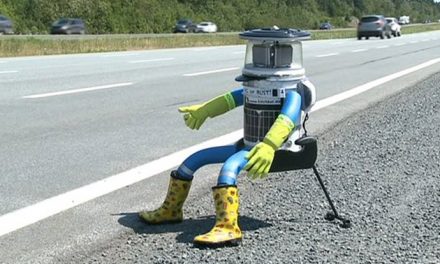
Google hasn’t disclosed the entirety of how this works for obvious reasons, but we do know that they are able to jump to conclusions based on google cookies that might be present on your web browser (everyone has some type of Google account these days, right?), your identifying web browser agent and if it is possibly being spoofed (trying to identify is IE, firefox, etc but actually being generated by a script of some sort), and also your mouse movement behavior.
When you see that check box to click, you most likely pause for a second, and then move your mouse to the box to click. Maybe you overshoot it a little, maybe move at an inconsistent speed, and maybe you hesitate to click making sure you should be clicking this box, etc. Google can figure out you’re most likely human, or at least capable of sitting in front of a computer navigating a mouse, by all of these subtleties and will give you a score.


If the score is over the threshold for human, congratulations! It checks the box and you can proceed without having to figure out if that squiggly thing is a G or a Q, or which pictures in fact contain a bike and which do not. If you are under the threshold, then they will present a more traditional CAPCHA with squiggly things or pictures for you to sort out. And also question your sanity of being a human (or are you?).

I hope that was helpful! Let us know if you have anymore insight into CAPTCHA’s or if you are a robot who has skirtted the system!










Recent Comments